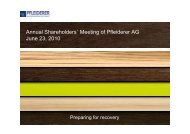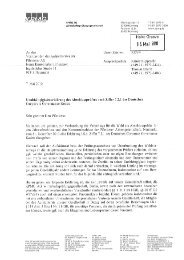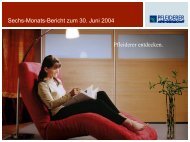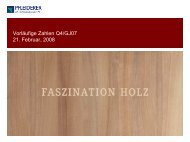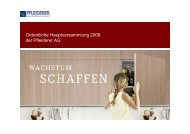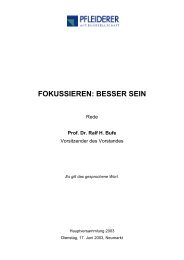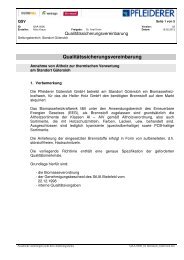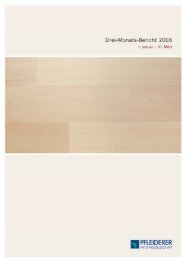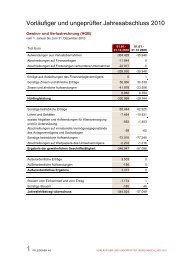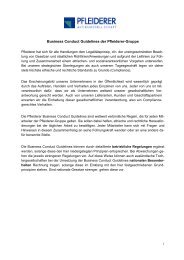PDF, 3.2 MB - Pfleiderer AG
PDF, 3.2 MB - Pfleiderer AG
PDF, 3.2 MB - Pfleiderer AG
You also want an ePaper? Increase the reach of your titles
YUMPU automatically turns print PDFs into web optimized ePapers that Google loves.
Fair Value of Financial Instruments<br />
The fair value of a financial instrument is the price for which one party would be prepared to<br />
take over the rights and/or obligations from this financial instrument from another party. The<br />
Company has its financial instruments valued by the respective contracting partners, which are<br />
generally banks.<br />
The carrying amount of liabilities from finance leases approximates current market value, applying<br />
the fair value for similar financing. The same also applies to the other financial instruments.<br />
Financial Assets<br />
Financial assets are recognized in accordance with the acquisition cost principle. Impairments<br />
are investigated to determine whether they are permanent. This is assessed on the basis of<br />
available general market data, specific industry and individual company data, which flows into a<br />
plan covering several year applying DCF methods. The duration and the amount by which the fair<br />
value has fallen below the acquisition costs as well as the Company’s intention and the ability to<br />
hold this financial asset also flow into this assessment.<br />
Intangible Assets<br />
Intangible assets acquired for a consideration are capitalized at acquisition cost and amortized<br />
systematically straight-line over their useful lives.<br />
Expenses incurred in connection with the purchase and own development of computer software<br />
used by the Company, including the costs incurred to enable this software to be operated in<br />
the manner intended, are capitalized and amortized systematically over its estimated useful life.<br />
The estimated useful life of software, patents, licenses and similar rights is generally three to<br />
five years. Other useful lives can arise on first-time consolidation of intangible assets that are<br />
acquired as part of a business combination.<br />
Goodwill<br />
Goodwill is capitalized and is tested for impairment at regular intervals (at least once a year) in<br />
accordance with SFAS 142. SFAS 142 requires that goodwill and intangible assets determined to<br />
have an indefinite useful life are no longer systematically amortized, but are tested for impairment<br />
whenever there are indications of this, and, at a minimum, once a year at the same time<br />
each year. The amortization rules under SFAS 142 must be applied to all goodwill and intangible<br />
assets acquired in business combinations after June 30, 2001. Pursuant to SFAS 142, systematic<br />
amortization was to be no longer applied from fiscal 2002 onwards to all other goodwill acquired<br />
on or before June 30, 2001.<br />
78



